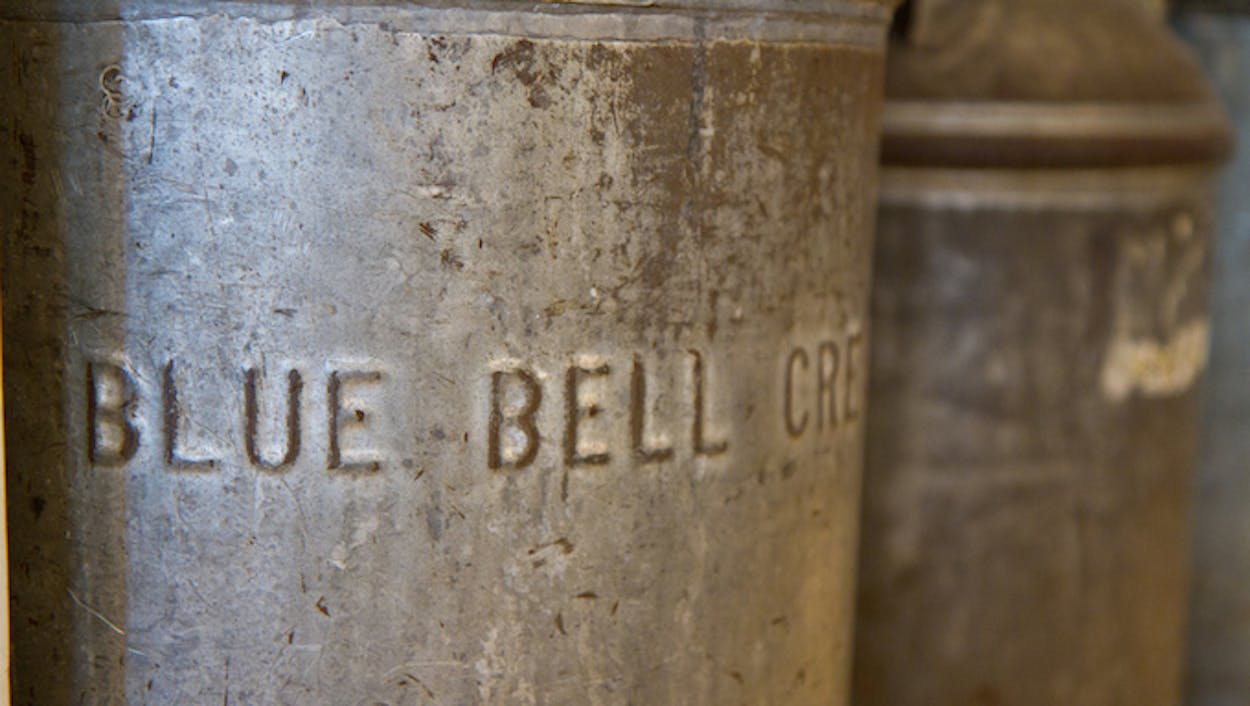On Sunday H-E-B announced that—following the new safety protocols that Blue Bell had announced at its Brenham creamery—it would be the first supermarket chain to begin offering the beleaguered ice cream company’s products after a serious listeria contamination was linked to eight illnesses and three deaths.
By Monday night, the company issued a total recall of all products after even those safety protocols proved insufficient and samples of the company’s chocolate chip cookie dough flavor tested positive for the bacteria. That’s all Blue Bell products, in all stores, made in all of its creameries around the country.
The fact that the new voluntary recall comes just a day after Blue Bell had begun sounding the all-clear at plants other than the Oklahoma creamery where the initial outbreak is believed to have started is deeply unfortunate for the company. On Sunday the Austin American-Statesman reported that H-E-B had been assured that all products it had begun stocking after the initial recall in March were now safe:
“Blue Bell is a brand Texans know and love,” H-E-B spokeswoman Leslie Sweet said. “We don’t relish impacting access to this important product, but H-E-B is committed to absolutely safe food, and we needed to ensure we were standing tall in this promise.”
All the Blue Bell products H-E-B stores had in stock were tossed, Sweet said, and since Monday have been replaced with fresh ice cream from production lines in Brenham that have been meticulously inspected.
“Blue Bell has assured us that the products they are now distributing are safe for consumption,” she said.
Even the products that Sweet refers to—the ones that had been replaced with fresh ice cream from the Brenham plant—are part of the new recall, which means that if you got your hands on a gallon on Sunday or Monday, you’re eating it at your own risk.
The second contamination clearly took the company by surprise. In addition to restocking the shelves at H-E-B, Blue Bell had invested in the services of “crisis management guru” Gene Grabowski as part of its attempt to rehab its corporate image. And while it’s always possible for ice cream from a second plant to test positive for contamination, the fact that it happened almost immediately after the product was deemed safe to eat couldn’t be worse timing: How are customers supposed to feel secure the next time Blue Bell declares the crisis over?
A press release from Blue Bell offers more information about the total recall:
Blue Bell Ice Cream of Brenham, Texas, is voluntarily recalling all of its products currently on the market made at all of its facilities including ice cream, frozen yogurt, sherbet and frozen snacks because they have the potential to be contaminated with Listeria monocytogenes, an organism which can cause serious and sometimes fatal infections in young children, frail or elderly people, and others with weakened immune systems. Although healthy individuals may suffer only short-term symptoms such as high fever, severe headaches, stiffness, nausea, abdominal pain and diarrhea, Listeria infection can cause miscarriages and stillbirths among pregnant women.
“We’re committed to doing the 100 percent right thing, and the best way to do that is to take all of our products off the market until we can be confident that they are all safe,” said Paul Kruse, Blue Bell CEO and president. “We are heartbroken about this situation and apologize to all of our loyal Blue Bell fans and customers. Our entire history has been about making the very best and highest quality ice cream and we intend to fix this problem. We want enjoying our ice cream to be a source of joy and pleasure, never a cause for concern, so we are committed to getting this right.”
The biggest question here—aside from the health of anyone who ate a contaminated Blue Bell product—is what all of this means for the company’s future. When products were going back on shelves over the weekend, the company was confident that it would weather the crisis, albeit at considerable cost: between the expense of disposing of the recalled ice cream, the lost sales from the countless products that ended up discarded, the potential lawsuits that are sure to come, the public relations expenses, and the future sales that are almost certain to be depressed after such a black eye on the company’s reputation, it’s possible that this will be a tough storm for Blue Bell to weather.
The Statesman explored a bit of what this might mean to the city of Brenham, where Blue Bell is the largest private employer (roughly 5 percent of the city’s population works for Blue Bell). The company has an annual economic impact of nearly $100 million for the city of 16,000.
The initial recall of products began on March 16—the first in the company’s 108-year history—and included only a line of products made at the company’s Oklahoma plant, which ceased production shortly thereafter. The recall expanded on April 7 to include various half-gallon and pint flavors, sherbets, and individual-serving cups (identifiable by a production letter stamp inside the product’s lid), and the company then declared the process completed. Stores continued to voluntarily restrict access to Blue Bell product while the company shifted its focus to addressing the problem in its plants. And then, of course, just after declaring the crisis over, products from an entirely different Blue Bell creamery tested positive for the bacteria, prompting the total recall of all Blue Bell products on the shelves.
The company has acted responsibly and proactively in issuing the recalls, and it’d be a shame if the toll that this takes on Blue Bell is as severe as it could end up being. But whatever optimism existed over the weekend has to be seriously reconsidered after an all-new crisis.








